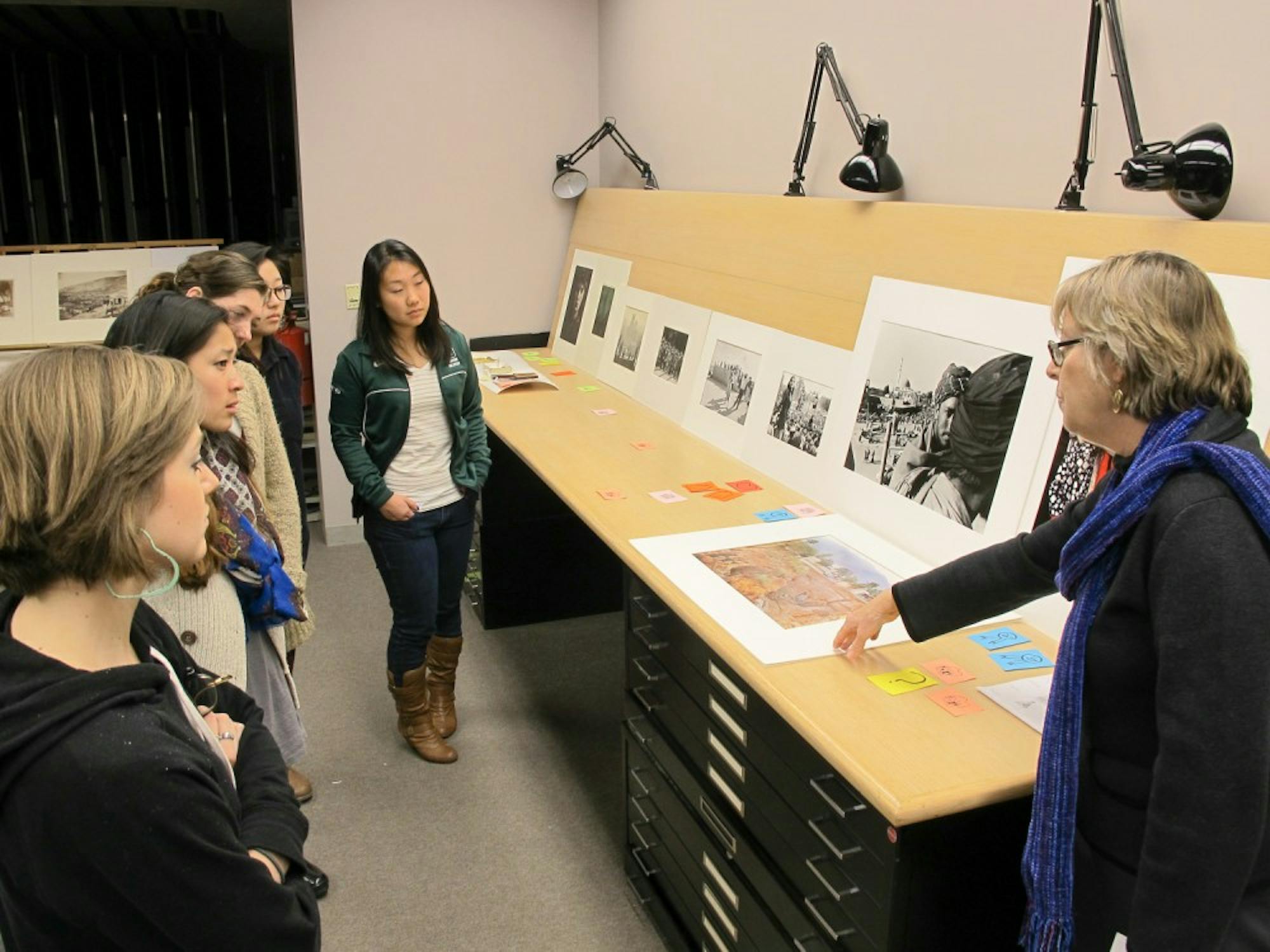In Museum Collecting 101, Dartmouth students speak with artists and collectors behind-the-scenes and even curate a show of their own.
The course, a Hood Museum program started in 2002, is offered once a year, typically during the winter or spring. The classes are capped at about a dozen students and meet on Mondays several times a term.
Participating students, who do not need experience in art history or studio art, collaborate with Hood employees to understand strengths and weaknesses of current Hood collections, said Katherine Hart, the Hood’s curator of academic programming. They learn about the Hood’s acquisition process before they undertake their own project.
“[Students] become knowledgeable about the museum’s mission, standard curatorial practice and the ethics and best practices of working with the art market,” Hart said.
Each year, Hood employees choose a theme to direct the focus for the program. This year, the class will study nine modern and contemporary photographers. Many previous classes have focused on photography as well, including digitally manipulated images, documentary photography, environmental photography, female photographers, Latin American photography and photojournalism.
The course typically begins with an introduction to current issues in the art market and gallery system and an explanation of the Hood’s acquisition process, Hart said. Students then delve into specifics for their particular theme, exploring the Hood’s collections in the Bernstein Study-Storage Center. There, they evaluate the Hood’s permanent collections like curators and analyze the quality and breadth of the works.
Virginia Ratliff ’14, who took the class her freshman year, said that many participants did not have previous knowledge of the behind-the-scenes workings of a museum.
“I ultimately took away an appreciation for the process of curating a museum as well as an appreciation for the many artists whose works do not get selected,” Ratliff said.
Next, the students look for ways to augment the museum’s holdings. This includes demonstrations by a current studio art major about traditional and new digital printing techniques and a discussion with a Hood curator about emerging photographers whose art applies to the class’s theme.
David Kamins ’14, who participated in Museum Collecting 101 as a freshman, said that students worked alongside Hood curators and curatorial interns, extensively critiquing photographers and their works by the end of the program. Several lively debates led to a group vote to determine which pieces the Hood would later acquire.
“People in the class came from many different backgrounds, and our collective observations and insights helped us come to the best possible conclusions and partake in some of the most intellectually-stimulating conversations,” Kamins said.
Last year, the Hood purchased the Museum Collecting 101 class’s three favorite works, as well as one runner-up, to be displayed in its “Transgressive Photography” exhibition. The tags on the works’ credit lines list all the class participants who helped choose the works.
The class this term will travel to New York City as part of its research. The students will meet collectors and curators at various museums and galleries, who will teach them about the nine photographers they study.
Ratliff, a double major in art history and English, said she was undecided about her future academic plans until taking Museum Collecting 101, which guided her toward art.
Kamins encouraged students of any major to pursue the course, even if they did not see themselves as artists or knowledgeable about art.
“We go to a liberal arts school,” he said. “Don’t let your ignorance in the subjects of art, art criticism or art history limit your interests and constrain you from one of the best programs that Dartmouth has to offer.”




